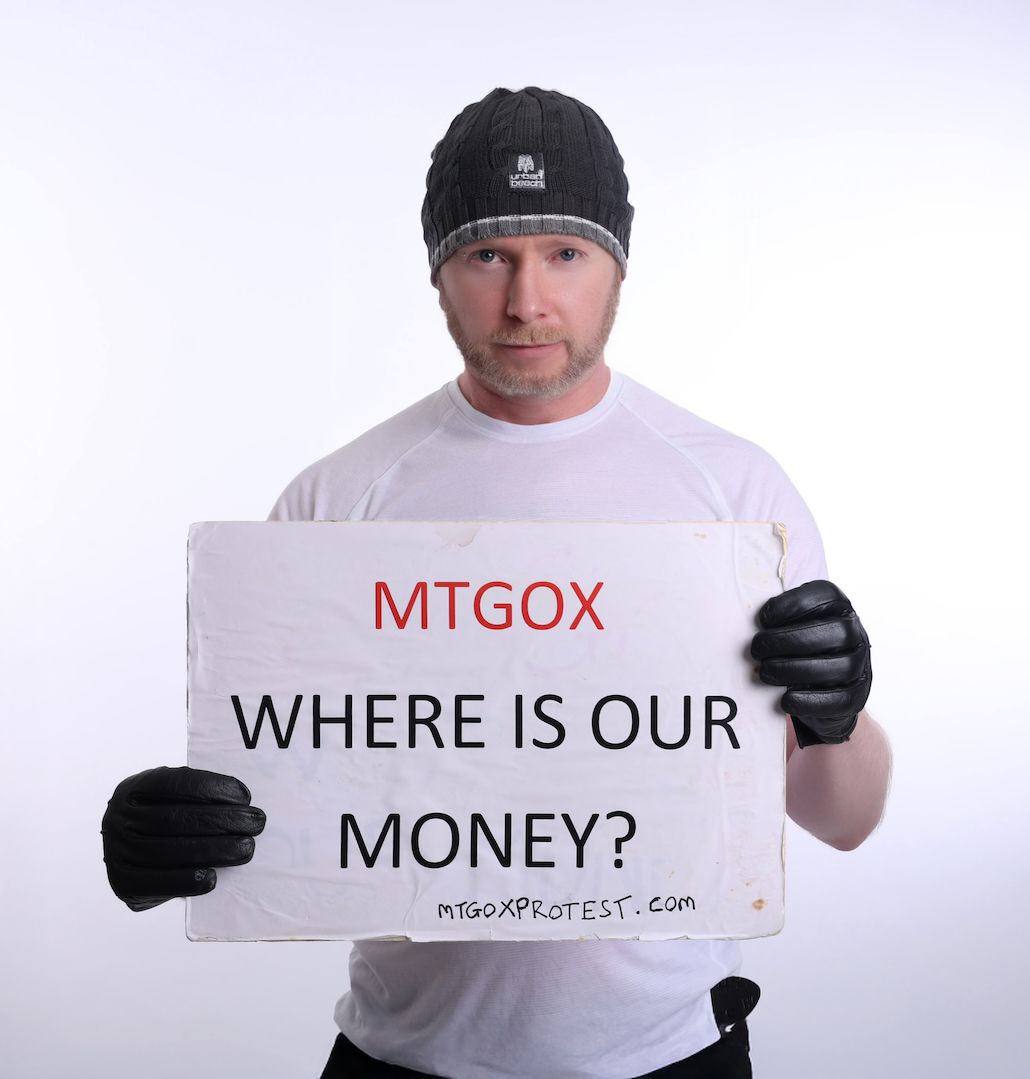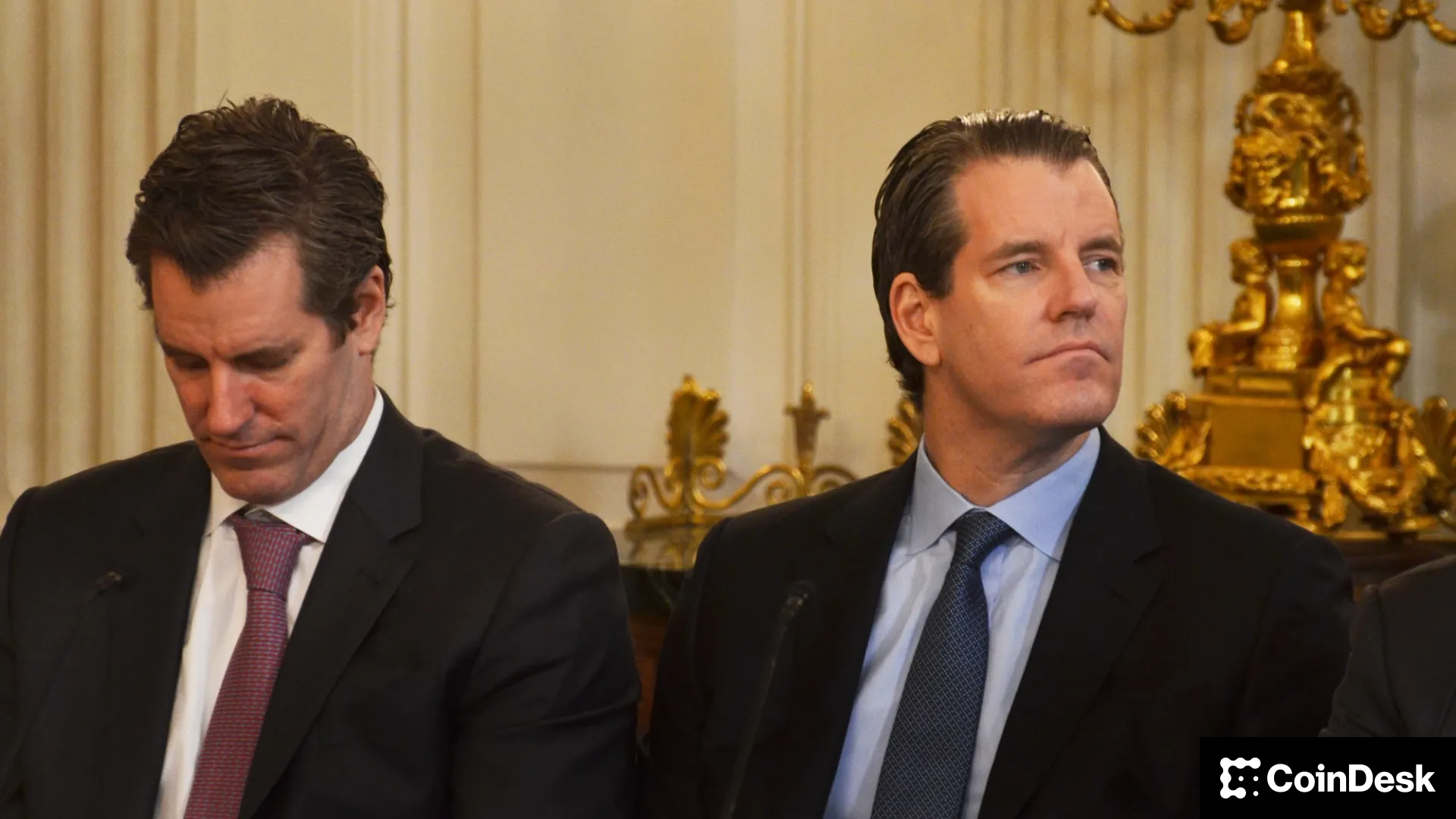Uncategorized
Iconic ‘Mt. Gox, Where is Our Money?’ Sign Is Up for Auction

One cold February morning in 2014, Kolin Burges stood outside Mt. Gox’s Tokyo office, clutching a handwritten cardboard sign and demanding answers from the bitcoin exchange’s CEO, Mark Karpeles, about his missing tokens.
Eleven years later, the iconic sign, emblematic of crypto’s first major financial scandal, is being auctioned on Scare.City with a reserve price of 4.5 BTC ($383,000). The sale starts later Friday and ends April 3.
«At the time, it didn’t even cross my mind it could become valuable,» Burges said in an interview with CoinDesk in Hong Kong. «I thought maybe I’d write a book someday, but the sign itself never seemed important. It’s remarkable how things have evolved.»
Burges had flown from London to Tokyo after Mt. Gox, then the world’s largest bitcoin exchange, mysteriously froze withdrawals.

«I woke up one morning and knew I had to go to Tokyo,» Burges recalled. «I didn’t really have a detailed plan. I just knew I had to be there.
«When the withdrawal didn’t arrive, I started feeling this growing sense of dread. At first, I wasn’t 100% sure, but as time went on, it became increasingly clear something was very wrong.»
His impromptu protest quickly gained international media attention, even attracting the notice of mainstream financial press like the Wall Street Journal.
Burges recalled those initial days in Tokyo as dreamlike and almost otherworldly.
«The moment I confronted Karpeles was intense,» he remembered. «I demanded answers, but he just brushed me off, blaming technical issues. It felt surreal, standing there in the snow, knowing something major was unfolding.»
As Burges protested outside Mt. Gox’s offices, the exchange’s attempts to mitigate the public fallout became increasingly evident.
«Mt. Gox kept dangling hope, but everyone could see the situation spiraling out of control,» Burges said. «They even invited us inside to protest privately. Anything to remove us from public view. It was ridiculous and desperate.»
Burges recalls how over drinks, someone from Mt. Gox, whom he declined to name, privately pressured him to cut it out.
«At one point, Mt. Gox representatives met me secretly, warning that continued protests would cause the exchange to collapse and everyone would lose their bitcoins,» he said. «That conversation made it clear they knew more than they admitted, and the situation was far worse than publicly acknowledged.»
Then, Burges recollects, one representative tried paying for their drinks with a Mt. Gox credit card — and it was declined.
«It was an ominous sign their banking relationships were unraveling,» Burges said.
Mt. Gox filed for bankruptcy in February 2014, days after Burges started his protest.
Seven years later, Karpeles was found innocent of embezzlement in a Tokyo court, while receiving a suspended sentence for manipulating data.
Last September, Karpeles set up a new crypto exchange, EllipX. He also established a crypto ratings company called Ungox in 2022.
In an interview with CoinDesk on the sidelines of Korea Blockchain Week in August 2024, Karples said that if he had modern blockchain analytical tools in 2014, and third-party custodians, Mt. Gox «wouldn’t have happened.»
Business
Crypto Trading Firm Keyrock Buys Luxembourg’s Turing Capital in Asset Management Push

Crypto trading firm Keyrock said it’s expanding into asset and wealth management by acquiring Turing Capital, a Luxembourg-registered alternative investment fund manager.
The deal, announced on Tuesday, marks the launch of Keyrock’s Asset and Wealth Management division, a new business unit dedicated to institutional clients and private investors.
Keyrock, founded in Brussels, Belgium and best known for its work in market making, options and OTC trading, said it will fold Turing Capital’s investment strategies and Luxembourg fund management structure into its wider platform. The division will be led by Turing Capital co-founder Jorge Schnura, who joins Keyrock’s executive committee as president of the unit.
The company said the expansion will allow it to provide services across the full lifecycle of digital assets, from liquidity provision to long-term investment strategies. «In the near future, all assets will live onchain,» Schnura said, noting that the merger positions the group to capture opportunities as traditional financial products migrate to blockchain rails.
Keyrock has also applied for regulatory approval under the EU’s crypto framework MiCA through a filing with Liechtenstein’s financial regulator. If approved, the firm plans to offer portfolio management and advisory services, aiming to compete directly with traditional asset managers as well as crypto-native players.
«Today’s launch sets the stage for our longer-term ambition: bringing asset management on-chain in a way that truly meets institutional standards,» Keyrock CSO Juan David Mendieta said in a statement.
Read more: Stablecoin Payments Projected to Top $1T Annually by 2030, Market Maker Keyrock Says
Business
Crypto Trading Firm Keyrock Buys Luxembourg’s Turing Capital in Asset Management Push

Crypto trading firm Keyrock said it’s expanding into asset and wealth management by acquiring Turing Capital, a Luxembourg-registered alternative investment fund manager.
The deal, announced on Tuesday, marks the launch of Keyrock’s Asset and Wealth Management division, a new business unit dedicated to institutional clients and private investors.
Keyrock, founded in Brussels, Belgium and best known for its work in market making, options and OTC trading, said it will fold Turing Capital’s investment strategies and Luxembourg fund management structure into its wider platform. The division will be led by Turing Capital co-founder Jorge Schnura, who joins Keyrock’s executive committee as president of the unit.
The company said the expansion will allow it to provide services across the full lifecycle of digital assets, from liquidity provision to long-term investment strategies. «In the near future, all assets will live onchain,» Schnura said, noting that the merger positions the group to capture opportunities as traditional financial products migrate to blockchain rails.
Keyrock has also applied for regulatory approval under the EU’s crypto framework MiCA through a filing with Liechtenstein’s financial regulator. If approved, the firm plans to offer portfolio management and advisory services, aiming to compete directly with traditional asset managers as well as crypto-native players.
«Today’s launch sets the stage for our longer-term ambition: bringing asset management on-chain in a way that truly meets institutional standards,» Keyrock CSO Juan David Mendieta said in a statement.
Read more: Stablecoin Payments Projected to Top $1T Annually by 2030, Market Maker Keyrock Says
Business
Gemini Shares Slide 6%, Extending Post-IPO Slump to 24%

Gemini Space Station (GEMI), the crypto exchange founded by Cameron and Tyler Winklevoss, has seen its shares tumble by more than 20% since listing on the Nasdaq last Friday.
The stock is down around 6% on Tuesday, trading at $30.42, and has dropped nearly 24% over the past week. The sharp decline follows an initial surge after the company raised $425 million in its IPO, pricing shares at $28 and valuing the firm at $3.3 billion before trading began.
On its first day, GEMI spiked to $45.89 before closing at $32 — a 14% premium to its offer price. But since hitting that high, shares have plunged more than 34%, erasing most of the early enthusiasm from public market investors.
The broader crypto equity market has remained more stable. Coinbase (COIN), the largest U.S. crypto exchange, is flat over the past week. Robinhood (HOOD), which derives part of its revenue from crypto, is down 3%. Token issuer Circle (CRCL), on the other hand, is up 13% over the same period.
Part of the pressure on Gemini’s stock may stem from its financials. The company posted a $283 million net loss in the first half of 2025, following a $159 million loss in all of 2024. Despite raising fresh capital, the numbers suggest the business is still far from turning a profit.
Compass Point analyst Ed Engel noted that GEMI is currently trading at 26 times its annualized first-half revenue. That multiple — often used to gauge whether a stock is expensive — means investors are paying 26 dollars for every dollar the company is expected to generate in sales this year. For a loss-making company in a volatile sector, that’s a steep price, and could be fueling investor skepticism.
-

 Business11 месяцев ago
Business11 месяцев ago3 Ways to make your business presentation more relatable
-

 Fashion11 месяцев ago
Fashion11 месяцев agoAccording to Dior Couture, this taboo fashion accessory is back
-

 Entertainment11 месяцев ago
Entertainment11 месяцев ago10 Artists who retired from music and made a comeback
-

 Entertainment11 месяцев ago
Entertainment11 месяцев ago\’Better Call Saul\’ has been renewed for a fourth season
-

 Entertainment11 месяцев ago
Entertainment11 месяцев agoNew Season 8 Walking Dead trailer flashes forward in time
-

 Business11 месяцев ago
Business11 месяцев ago15 Habits that could be hurting your business relationships
-

 Entertainment11 месяцев ago
Entertainment11 месяцев agoMeet Superman\’s grandfather in new trailer for Krypton
-

 Entertainment11 месяцев ago
Entertainment11 месяцев agoDisney\’s live-action Aladdin finally finds its stars




